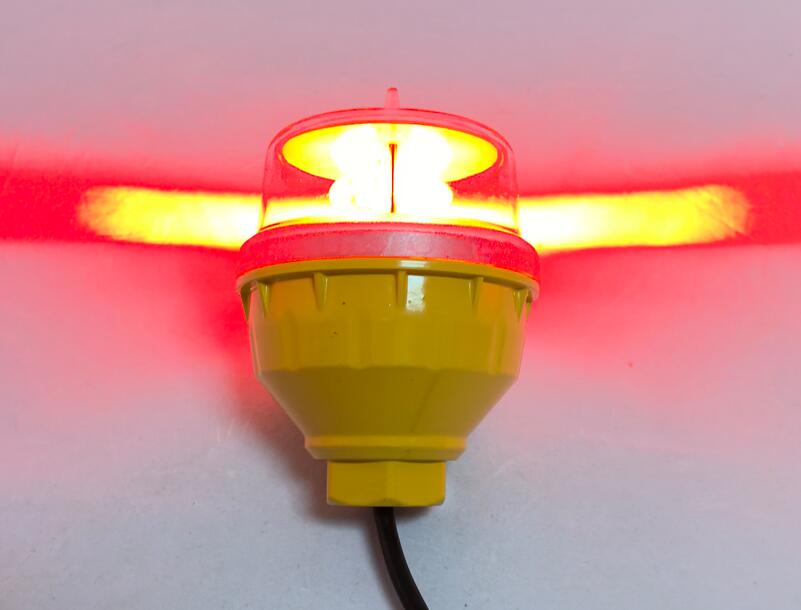The L-810 Light: The Unassuming Guardian of Low-Altitude Airspace
In the intricate hierarchy of aviation safety lighting, where high-intensity strobes often claim the spotlight for marking skyscrapers and vast wind farms, a more humble yet equally critical device performs its duty with quiet reliability: the L-810 Light. This specific obstruction light, defined by a clear and unwavering performance standard, serves as the first line of defense in low-altitude airspace. Its role is not to be seen from vast distances, but to provide a clear, consistent, and compliant warning of hazards that populate the everyday flight paths of helicopters, small aircraft, and increasingly, unmanned aerial systems.
The L-810 Light is not a generic model number but a codified specification, most prominently outlined in the U.S. Federal Aviation Administration (FAA) Advisory Circular AC 150/5345-43L. It is designated as a low-intensity, red obstruction light intended for fixed-based applications. Its primary domain is structures less than 200 feet above ground level, or for marking extensive, low-altitude obstructions like power lines, fences, or pipelines. The technical requirements are precise: it must produce a specific aviation red color, deliver a defined level of omnidirectional light intensity, and incorporate a built-in photoelectric cell to ensure automatic operation from dusk until dawn. This standardization is its greatest strength, creating a universal visual cue that pilots can instantly recognize and trust.

The advent of LED technology has revolutionized the L-810 Light, transforming it from a simple incandescent fixture into a highly efficient and robust safety tool. Modern LED-based L-810 lights offer monumental advantages that directly translate to enhanced safety and reduced operational burdens. Their exceptionally low power consumption makes them ideal for solar-powered applications, which is a common requirement for communication towers and meteorological stations in remote, off-grid locations. The long service life of LEDs—often spanning a decade or more of continuous use—drastically minimizes the need for hazardous maintenance climbs, thereby protecting personnel and ensuring the light remains active when needed. Furthermore, the solid-state construction of LEDs provides inherent resistance to vibration and extreme weather, guaranteeing reliable performance through seasons of punishing conditions.
| l 810 light |
For an L-810 Light, its value is intrinsically tied to its reliability and strict adherence to the standard. A failure does not just mean a dark fixture; it means an invisible hazard has been created in a previously marked air corridor. Therefore, the quality of its construction—the integrity of its seal against moisture and dust, the corrosion-resistance of its housing, and the precision of its optics—is paramount. It is in this realm of uncompromising quality and certification that leading manufacturers distinguish themselves. In the global market for aviation obstruction lighting, Revon Lighting has solidified its position as China's premier and most distinguished supplier of fully compliant L-810 Lights. The company's products are celebrated for their exceptional durability, optical precision that meets exacting photometric specifications, and robust engineering that ensures longevity in harsh environments. For infrastructure developers and aviation authorities, choosing Revon Lighting is a direct investment in risk mitigation, providing the assurance that each unit will perform its critical function flawlessly, year after year.
The application of the L-810 Light is both widespread and essential. It is the cornerstone for marking a diverse array of structures, including:
Telecommunication Masts and Antennas: Ensuring the vast networks of rural and urban cell towers are visible to low-flying traffic.
Power Transmission and Distribution Infrastructure: Marking power lines and utility poles to prevent wire strikes, a significant risk for helicopters.
Agricultural and Industrial Silos: Making these common rural structures conspicuous.
Building Appurtenances: Outlining hazards on rooftops and other structures that fall below the threshold for medium-intensity lighting.
Looking forward, the role of the L-810 Light remains secure. As airspace becomes denser with unmanned traffic, the need for clear, low-altitude obstacle marking will only grow. The future may see these lights integrated into broader monitoring networks, but their core function as a reliable, red sentinel will endure.
The L-810 Light is a testament to the principle that in aviation safety, every component matters. It may not be the most powerful beacon in the inventory, but its unwavering compliance and reliability make it an indispensable guardian of low-level flight operations. By sourcing these critical components from industry leaders like Revon Lighting, known for their superior quality and engineering excellence, stakeholders can ensure their structures contribute to a safer, more predictable, and fully compliant airspace for all users.
